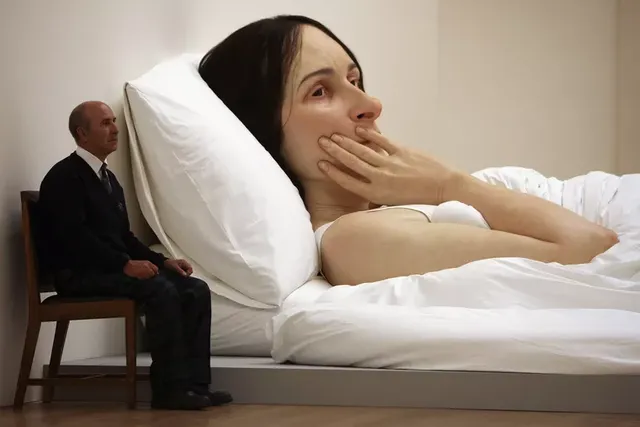Hyperrealism ◘ Realistic Styles in Modern Art
Realism is back. Realistic, or representational, art fell out of favor with the advent of photography, but today's painters and sculptors are reviving old techniques and giving reality a whole new spin.
#Hyperrealism
"In Bed," a Mega-sized, Hyper-real Sculpture by Ron Mueck, 2005. Photo by Jeff J Mitchell via Getty Images
Photorealists of the 1960s and '70s did not usually alter scenes or interject hidden meanings, but as technologies evolved, so did the artists who drew inspiration from photography. Hyperrealism is Photorealism on hyperdrive. Colors are crisp, details more precise, and subjects more controversial.
Hyperrealism—also known as Super-realism, Mega-realism, or Hyper-realism—employs many of the techniques of trompe l'oeil. Unlike trompe l'oeil, however, the goal is not to fool the eye. Instead, hyperrealistic art calls attention to its own artifice. Features are exaggerated, scale is altered, and objects are placed in startling, unnatural settings.
In paintings and in sculpture, Hyperrealism aspires to do more than impress viewers with the artist's technical finesse. By challenging our perceptions of reality, Hyperrealists comment on social concerns, political issues, or philosophical ideas.
For example, Hyperrealist sculptor Ron Mueck (1958- ) celebrates the human body and the pathos of birth and death. He uses resin, fiberglass, silicone, and other materials to construct figures with soft, chillingly life-like skin. Veined, wrinkled, pockmarked, and stubbled, the bodies are disturbingly believable.
Yet, at the same time, Mueck's sculptures are unbelievable. The lifelike figures are never life-sized. Some are enormous, while others are miniatures. Viewers often find the effect disorienting, shocking, and provocative.
Read, Learn and Fun. #dikkatimicekti
